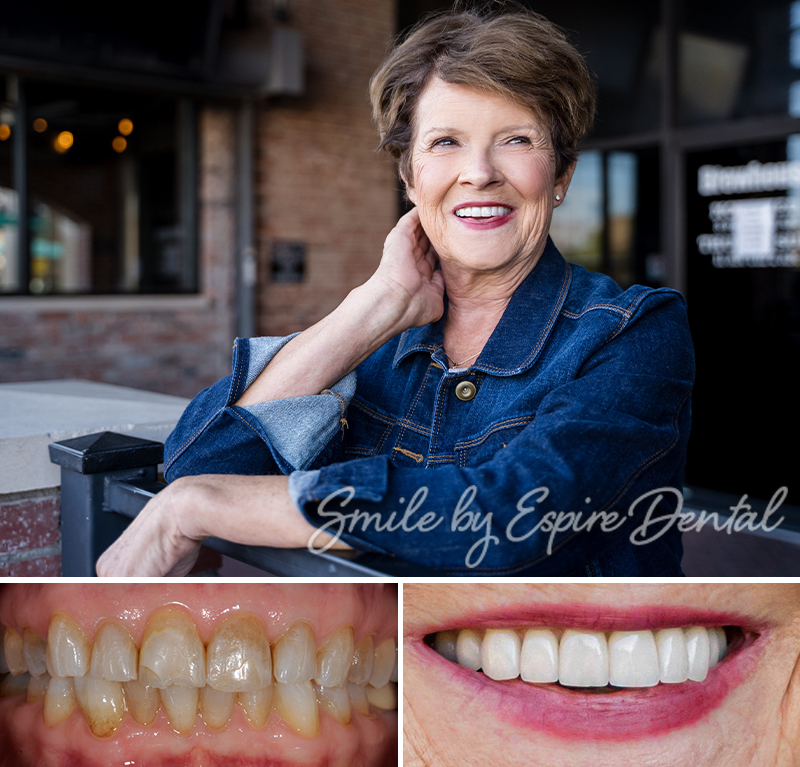
Could you have gum disease? Here are seven telltale signs to look out for.
Periodontitis, commonly known as gum disease, is a serious gum infection that damages the soft tissues around your teeth. When plaque builds up on your teeth and hardens into tartar beneath the gum line, the stubborn bacteria that you can’t brush off causes inflammation and infection. In addition to poor oral hygiene, risk factors for periodontitis include smoking, diabetes, certain medications, some immunocompromising diseases, and even hormonal changes.
Gum disease, even in its mildest form, is very common among people of all ages. So, how do you know if you have it? Here are seven telltale signs to look out for.
The 7 Signs of Gum Disease
You might have periodontitis if you have any or all of the following symptoms:
- Swollen gums — When bacteria builds up along the gum line, it irritates the gums and causes them to swell. If you think you might have gum disease, one of the first things you should do is check to see if your gums are puffy or swollen.
- Bleeding gums — Gums that bleed or ache are another classic sign of gum disease. Healthy gums won’t bleed when you floss or brush and even if they do, it typically stops within a week. If your gums bleed often, you might be in the early stages of gum disease.
- Receding gums — If your teeth look longer than they used to, your gums are receding. This means the bones in your jaw have started to break down due to gum disease and your gums are separating from the tooth, creating deep pockets. Healthy gums should fit snugly around the tooth.
- Tooth sensitivity — Tooth sensitivity and receding gums go hand in hand. When the delicate inner part of the tooth, the dentin, is exposed, the tooth becomes more sensitive to cold air and water. If taking a sip of ice water has become painful lately, you might have gum disease.
- Loose teeth — Gum disease attacks the stable base that holds your teeth in place, causing them to shift or wiggle. Loose teeth also indicate that full-fledged tooth loss is on the horizon.
- Pain while chewing — Both loose teeth and tooth sensitivity caused by gum disease can make it painful to chew your food.
- Persistent bad breath — Everyone gets bad breath from time to time, but if you experience bad breath even after brushing and popping mints, there might be trouble. Persistent bad breath indicates excessive bacteria and tooth decay, two warning signs of gum disease.
How To Treat Periodontitis
Gum disease is a serious dental condition, but it’s possible to prevent or treat it if your dentist diagnoses you early enough. The best way to prevent periodontitis is to practice good dental and oral hygiene. Brush your teeth twice a day for two minutes, floss at least once daily (preferably before brushing), and rinse with an antiseptic mouthwash. These best practices make your mouth less hospitable for infection-causing bacteria and help prevent gum disease. You should also schedule regular cleanings with your dentist twice a year.
If your gum disease is more advanced, you should shift your focus to infection control and management. Your dentist might recommend non-surgical treatments like root planing, surgical interventions like flap surgery to remove the infected tissues, or medications like oral antibiotics to reduce bacteria in the mouth.
Start taking care of your gums as soon as possible — your smile is too important to wait!
Let Us Take Care of Your Teeth
A bright smile starts with healthy gums. With good oral hygiene and regular visits to your dentist, you can prevent gum disease or treat it if you already have it. For more information on gum health, contact the dental professionals at Espire Dental today! We’ll help you keep your smile bright and your gums healthy for years to come.


